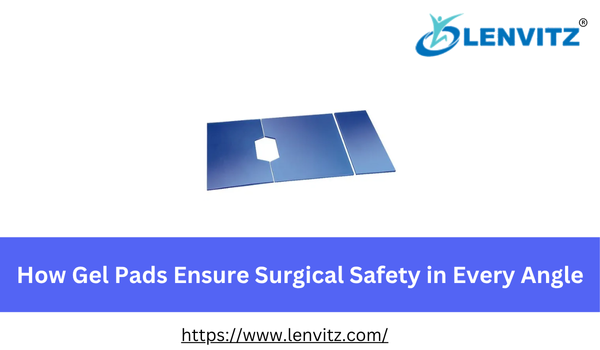When a patient undergoes surgery, much focus is rightly placed on the skill of the surgeon. But beneath the patient lies a critical system of protection: OT table positioning gel pads. These devices are essential for patient safety, working to prevent devastating, yet often preventable, complications that arise from immobility on a hard operating surface. Whether the patient is on their back, side, or in a more complex posture, specialized gel pads are the unsung heroes maintaining tissue integrity and nerve function.
The Universal Threat: Pressure Injury
Remaining still during surgery, which can last for hours, places intense, sustained pressure on parts of the body where bone is close to the skin (bony prominences). This pressure restricts blood flow, leading to oxygen deprivation in the tissue. This is the mechanism behind pressure ulcers (bedsores) and nerve compression injuries, which can cause post-operative pain, numbness, or even permanent weakness.
- The Problem: Rigid surfaces concentrate pressure.
- The Solution: OT table positioning gel pads that use viscoelastic technology to conform to the body and spread weight evenly.
Specialized Gel Pads for Every Surgical Position
Patient positioning is dictated by the surgery being performed, and each position presents its own unique risks requiring specific gel pads.
Lying on the Back: Supine Position Gel Pads
The supine position (lying on the back) is the most common, but it exposes the sacrum (tailbone), elbows, and heels to high pressure. Supine position gel pads are used strategically under these points. For instance, small cushions are used under the heels to achieve "heel floating," completely offloading the weight, while larger pads cushion the sacral area to maintain essential blood flow.
The Side Angle: Lateral Position Gel Pads and the Lateral Positioner
When a patient lies on their side for procedures like hip or lung surgery, the risks multiply on the dependent side. The entire body weight rests on one arm, shoulder, hip, and ankle. This is where the Lateral positioner comes in.
A Lateral positioner is a large, contoured system that helps stabilize the patient. Crucially, lateral position gel pads are used at all contact points—from the dependent ear down to the ankle—to prevent compression of vulnerable nerves, such as the peroneal nerve at the knee or the brachial plexus in the shoulder, ensuring a safe and stable lateral position throughout the operation.
By using the right gel pads for every position—from the supine position gel pads to the lateral positioner—surgical teams prioritize a patient's entire well-being, minimizing the risk of complications from immobility.

